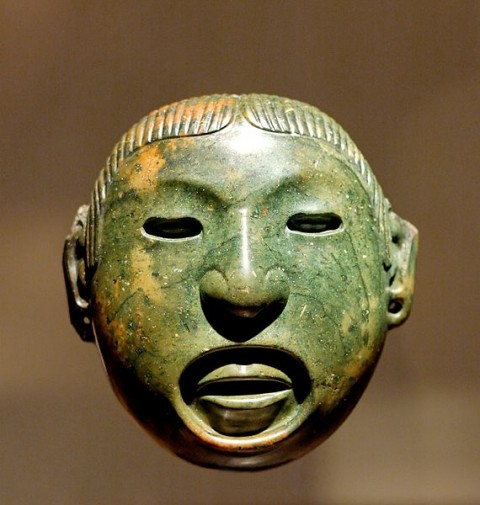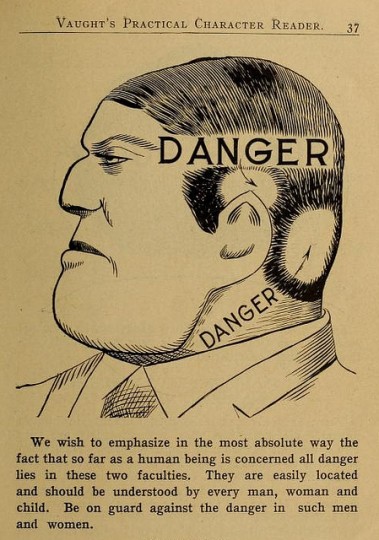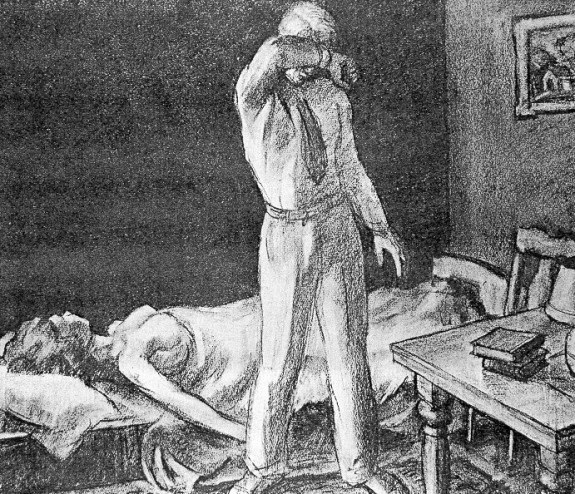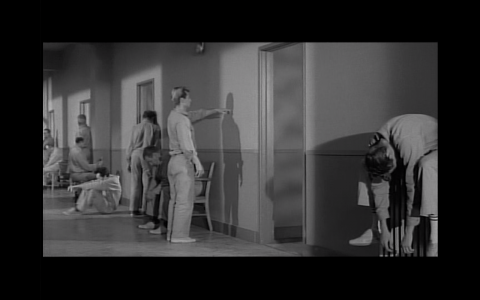
Several stories felt related this week, even if perhaps not directly.
Lauryn Hill was sentenced to 3 months jail time AND court ordered to undergo counseling to help with her ‘conspiracy theories’. Now I was amused to see Hill carry a copy of Marcuse’s Eros and Civilization into court with her, but I also remember she was with that anti Aristide pro capitalist Wycliffe Jean, so, I take a Mulligan on the whole thing ….except to note that courts mandating counseling is strangely disconcerting. Not to mention that serving actual time for tax evasion seems restricted to black Americans. I don’t recall any Wall Street crooks being sentenced for….oh …wait…..right, they were never charged with anything, my bad. I would have to look up the figures on race and tax evasion and the sentencing particulars, but I suspect its as unbalanced as most everything else in the criminal justice system.
This segues nicely to this weeks release of the American Psychiatry Association’s Diagnostic and Statistical Manual of Mental Disorders. That this book will someday take its place alongside the works of Samuel A. Cartwright (Diseases and Peculiarities of the Negro Race), Phrenology, and the Reading of Goat intestines.

However, it is worth noting that the real subject here is (again) the training of obedience to authority. The U.S. (and really most of Europe as well) are easily swayed if someone is labeled “expert”. Lets take a quick journey down memory lane vis a vis official “experts” and authorities on various subjects. I meantion *Personology” — this was and still is the idea that one can read people’s faces for clues to who they are. Among the founders of this movement (sic) was a Los Angeles superior court judge, in the 1930s.
A judge….a guy who can sentence you to jail, or to pay fines, is also the founder of some crank junk science version of Phrenology.
One has to really step back a moment and think about, again, what identity means to western society. This new psychiatric manual lists things like excessive temper tantrums as a clinical disorder, or for children, saying *no* too many times is a syndrome… and one with a chemical cure.
Let me just add here that Malcom X.s grandson was found dead in Mexico this week. This was one more story I found worth looking at. Here is Davey D. on the subject:

One of the things I continue to find disturbing is that a large majority of Americans seem intent on an anti-intellectualism that really feels like a defense mechanism, actually. And it always (or so it feels) to be linked to culture. People are deeply attached to their products.
A couple comment threads back Molly Klein posted a letter and with it some links. I quote this from an abstract of a course description at University of British Columbia:
“Most research about television studies its impact on viewers. This thesis asks instead how TV influences what is in front of the camera. The dissertation investigates how TV reshapes other institutions as it broadcasts their activities, using four ethnographic studies of televised crime and policing. These studies examine: 1) the reality-TV show “Cops”; 2) the televising of surveillance footage and home video of crime and policing: 3) television and Vancouver’s Stanley Cup riot; 4) the law-breaking television stunts of Greenpeace. The four studies provide empirical contexts to draw together and compare for the first time three diverse strands of sociological theorizing which can be used to analyze how TV influences other institutions. My data show the most powerful players, exemplified by the police, tend to dictate which situations are televised, and to produce the “authorized definitions” of these situations, and thus control their institutional consequences. Invoking the notion that “seeing is believing”, TV is uniquely effective at warranting these “authorized definitions”. Many understandings of television over-emphasize its visual aspect; often instead verbal interpretations of televised events by the most powerful players are more important. The meanings of these televised episodes are produced within a broader culture which tends to support the established order. Television and source institutions create new social roles for audiences in these situations. However, these roles tend to limit audiences to involvement which simply reproduces institutional power. The implications for the three theoretical perspectives being compared are as follows. Rather than having a democratizing effect in these situations as predicted by “medium theory”, TV mostly has various influences which reinforce existing power relations. These criminal justice situations are reshaped by the cultural logic of television, fitting with the “media logic” perspective. Televised activities tend to become more institutionally important, tightly managed, dramatic, simplified, and are shaped to fit dominant values. However, powerful source institutions, particularly the police, tend to control television’s influences, often harnessing them for their own legitimation and surveillance purposes, consistent with the “institutional” perspective. My data thus lead me to support key aspects of these latter two perspectives, and to produce a synthesis of these two.”

This is intriguing, but I think actually is already over simplifying. But I think all sociology over-simplifies. Still, this is a topic of real value. There is no question that people’s attachment to film and TV extends way beyond just being “fans” (although I think there is a pathological degree that fandom can reach and does reach, all too often). Still, pathological fandom is not in the current DSM-5, so far as I know. But back to “experts” for a moment. Lets take a look at Henry Murray.
Murray was Director of the Harvard Psychological Clinic in the School of Arts and Sciences, and collaborated with Stanley Cobb, Professor of Neuropathology at the Harvard Medical School, to introduce psychoanalysis into the Harvard curriculum. He and Cobb set the stage for the founding of the Boston Psychoanalytic Society after 1931 but a series of curious political in-fights and backroom bickering, kept them out. There is no doubt a good deal written on this, and one Murray and Cobb’s ambivalence toward Freud and Vienna, but its not really so germane to my point. Murray developed a theory of personality called *Personology* ( a different one). Murray came from a wealthy east coast WASP family, went to prep school and then Harvard. He studied medicine, and actually did his internship at New York Presbyterian studying embriology. He turned to psychoanalysis after a visit to Jung in Switzerland in the early 1920s. He returned to the U.S. determined to make American, in a sense, this new study of the mind. One interesting note is that Murray was a sort of hobbyist expert on Melville. In any event, in 1937 he became head of the Harvard Psychological Clinic. Murray was the author of the famed Thematic Apperception Test (TAT).

Ok, Murray also, during the war, worked with Wild Bill Donovan at the OSS. He became the originator of “situation tests” for weeding out the wrong sort of person for life as a spy. Or assassin. Murray consulted with the British government as well during the war years. In 1942 Donovan had Murray write the “Analysis of the Personality of Adolph Hitler”. Exactly what this was supposed to achieve is probably going to forever remain obscure, but among the conclusions Murray came up with was that Hitler was gay. Gay and impotent. Murray’s work after the war, continuing this sort of analysis, was the foundation for today’s *offender profiling*. This was the branch of psychological theory that saw people as types, and really, when one looks at *personology* one sees a sophisticated form of phrenology, in essence. Murray later worked with the U.S. government (CIA) on the MK ULTRA experiments.
I get into all this because this strange little lisping man with mildly crossed eyes, who started out working with chicken eggs in his embriology days in a hospital basement, eventually found himself the father of racial profiling and CIA and FBI attitudes toward criminal insanity, and the dangers of non white races. Murray was a white WASP from a very wealthy family. He knew and collaborated with Alfred North Whitehead, and other logical positivists. I try to imagine what book of Melville might have been his favorite and my guess would The Confidence Man. In any event, when you dig deeper into Murray’s work, you see the extraordinarily limited nature of his thinking.
“Freud’s contribution to man’s conceptualized knowledge of himself is the greatest since the works of Aristotle; but his view of human nature is exceptionally…one-sided. Were an analyst to be confronted by that much heralded but still missing specimen of the human race—the normal man—he would be struck dumb. Thus my theory sets forth a health-oriented extension of, and complement to, the illness-oriented Freudian system.”
Henry Murray
For Murray, there was always this creepy tinge to his belief in “health”, not the basic sense of sensual orgasmic human love, or desire, but the Spartan cleanliness of the Puritan crossed with a Norman Vincent Peale trust in positive thoughts , and an advocacy for discipline and self denial. I am being reductive, to be sure, but this was a singularly American mind, and one from the White establishment, a patrician male who found his career path working alongside the authority structure. And in turn the U.S. academic community found in Murray, a thinker it was comfortable with — and not some slimy fucking Jew bolshevik or anarchist subversive. Murray was the White Man with a belief in the value of the Ego, and more, the Super Ego.
Which brings us back to the DSM-5. We are all conditioned to accept authority on its own terms. If someone is introduced as Doctor So and So, I think most of us will sort of look at the man or woman differently, even if only slightly. Or for most Americans if there is a uniform, then latent sado-masochistic tendencies are triggered. But I should say, WHITE americans. This weeks news again demonstrates the U.S. caste system. Lauryn Hill gets a lightweight sentence, but sentence all the same — coupled to a bit of head shrinkage. Would Taylor Swift be given the same sentence? I doubt it, personally. Wesley Snipes had to do time, so have other Black celebrities. Very few White ones have. Robert Downey Jr is about the only one I can recall recently, unless we think Phil Spector qualifies. But I digress….the DSM-5 is really nothing more than an instruction manual for Shrinks to use as cover for whatever cocktail of drugs they prescribe to their clients.
http://www.guardian.co.uk/society/2013/may/12/medicine-dsm5-row-does-mental-illness-exist
Beyond my snideness lie real issues. Firstly, the very notion of depression is so amorphous as to be almost useless. The new DSM 5 has changed the number of days needed after the death of a loved one, to be defined as depressed. Used to be a few months, now its a few weeks. Earlier means quicker use of anti depressants. But beyond that, what do all these words mean? What does a phrase like “loved one” mean? My dog? My mother. In my case, I was more upset about my dog. There was a wonderful part on a recent Mad Men (yeah yeah i know i know) where the loss of Roger’s mother elicted no emotional response but the death of a shoe shine man caused him to break down. It was a perceptive scene. The shoe shine brush as a metaphor for a dead parent, for an anonymous death of a menial worker, and for one’s own sense of purpose was perfectly realized. Is that grief in any way pathological?

This is a huge topic and I intend to return for a longer discussion, but the point is really that “Dissociative trance disorder” is just a shamanistic state — and its almost comic (no it IS comic) to create a parody of a category for this. Or Grief (mood disorder), or 79% of people have some version of a “undifferentiated somatoform disorder” (I have now read three different definitions of this, and had to correct myself here. So, honestly, it seems to be general nervousness, can result in bad sleep patterns, fatigue, discomfort, and may continue to change over time, but to be diagnosed these rather vague symptoms have to have persisted for six months. The point is, a whole lot of people can be so diagnosed)…when I am sure half those would be cured if you promised to pay their rent for a year. This is the legacy of Murray and his “emphasis on health”….because whenever someone says they are about health, you know they are actually fixated on creating or seeing illness. This actually cuts to the heart of a bigger issue or question. The rise of fascism that we see now, for that is what it is, is linked to culture, for culture is the precursor for the political. And secondly, that the trends of thought one sees in culture and in society (such as the DSM-5, or the blatant institutional racism we see, or the fawning adoration of militarism, etc) are suggestive of what is to come in political/material terms. The biological determinism of the late 19th century in Germany and France, laid a cultural intellectual groundwork for the rise of fascism. Today, the cultural landscape of post modern Capital includes its own version of these things in the totalitarian culture of corporate manufacture and the intensification of media intrusion in daily life. Even a casual appraisal of new TV shows is pretty indicative of an absolute bottom having been reached in audience education, but also in the poverty of imagination of those manufacturing this dross.

There is buried within this cultural landscape an aggression that is equal parts audience and manufacturer, I think. The nationalism of the U.S. now is polarizing, and as the economic inequality increases the insistance on this nationalism will be increased by the government. It is already. What is more intriguing, and often confusing, is the split on individualism — on the one side is the frontier mtyhology of the Cowboy and rugged self made capitalist, and on the other a strangely increasing anti-individualism that is expressed in tropes of anti intellectualism and this weird infantilising of the culture as a whole. That major newspapers (cyber or print) cannot hire writers who can compose complete sentences suggests they dont want complete sentences. They want STOOOPID. The culture industry once marketed difference where there was no difference, but increasingly they manufacture similarity where there is the identical.

Shock Corridor, 1963, Dr. Sam Fuller
It is hard to know how to factor in the increasingly overt racism on display. Popular liberals like Bill Maher can rant against Muslims in a way nearly identical to the rants of a Peter King or Lord Kitchner. The normalizing of this bigotry is far more extreme than anything Reagan ever expressed. The normalizing that in inherent in programs such as HBOs “Girls”, a landscape of white malaise, with the echoes of nastiness born of certain privilege. Dunham’s genuine revulsion factor is marketed as feminism — in a sense the same way the grotesque Sex and The City’s consumer vulgarities were marketed as “women’s friendship”. This is no different than Ollie North appearing on FOX as an expert on all things military, and often being framed as an arbiter of morality.
The lessons of this edition of the DSM is that poverty, abuse, social trauma, and the depth of tragic emotions are irrelevant to establishment medicine. All the poor are crazy, that is a good part of the message. All the poor have bumps on their heads suggestive of violent tendencies. All the poor are sexually insane. Dissent IS conspiracy theory. I don’t doubt they will find a gene linked to dissent or conspiracy theory.

The real message is that so much of what is taken for granted, is perceived as natural, is just the creation of rich White men. The status quo, the abiding devotion to totalitarian principles and the various threads of hygiene and a certain dryness, a certain fear of the hirsute — these ideas are creations, not some natural law. They have been handed down partly by the institutions that embraced them. Henry Murray was a third rate thinker, but he ended up creating a paradigm for racist profiling, for notions of fixed identity and certain fear of sexuality.
Now Big Pharma lays out increasingly absurd guidelines for treatment of mental illness.
From the APA development page on Hypersexual Disorder:
“Hypersexual Disorder is proposed as a new category to be added. The diagnosis would apply when a person experiences several of the indicated symptoms (extreme amounts of time spent in the sexual activity, using the sexual activity in response to low mood or stress, failed attempts to reduce the behaviors, etc.) Moreover, it would apply only when the problem lasted six months or more, when person experienced significant distress or impairment in major life areas because of it, and when the problem was not directly caused by a medication or drugs, as well as other criteria. Under the proposal, an official diagnosis would also specify which behavior(s) are problematic in the case: masturbation, pornography use, cybersex, etc”
Extreme amounts of time spent in sexual activity. Seriously? Fucking too much is a sickness. The draconian madness of this is, after one stops laughing, pretty unsettling. Six months (where do these time limits come from?) where impairment in major life areas…..again, this is so amorphous as to be meaningless. Utterly meaningless. Desire, a sexual intoxication that lasts a year, and maybe you miss work a few times….I’ve known that to happen….this is cause for medication? This is not a disorder, it does a great disservice to real psychiatry, and its now there will be a predictable backlash that no doubt will include a minimizing of actual mental illness. A condemnation of the sufferers. And a return to Religious dogma as the corrective to Enlightenment values…in a sort of historical flip of the script.

There have been great strides made in the treatment and care of mental illness. In Norway here, I know, the changes over fifty years have been dramatic. People who were once hidden away in barns because of ignorance and fear are now taken care of in various facilities, or simply incorporated into daily life with meaningful jobs. In fact I’m having a table built by a carpentry business that employs all learning disabled workers. Great quality and creative work. But these notions of making the normal into a sickness will return to haunt society. What is worth thinking about is why is there a need for everyone to be ill, and who profits?

ADDENDUM;
Three things occurred last night. First, I read the story of a Bakersfield CA man beaten to death by the Kern’s County Sheriff’s Dept. I’ve written before about the sheriffs. If you can hold a crayon, you are accepted into the department. Here is the story:
http://www.bakersfieldcalifornian.com/local/x568091070/Dad-who-died-during-arrest-begged-for-his-life-cops-take-witness-video
The second is this story about Reagan and Rioss Mont.
http://www.commondreams.org/view/2013/05/12-2
And the third thing is that I had a brief exchange online with a friend of mine who happens to be a therapist. I won’t go into all the details, but one thing struck me. My “bashing” of Henry Murray.
I thought about this. The point, firstly (and perhaps I’d not made this clear) is that the question isn’t if Murray might have done good clinical work, or even theoretical work (though I see little evidence for this) but that he represents the class, race, and hence value system that has shaped western ideas on mental illness, and on psychiatry and treatment. If Murray worked on MK ULTRA, if he collaborated with the CIA for decades, and with the FBI, and his work helped shape offender profiling, then that is all the evidence I need to make my point. I couple this to the Reagan story, and the Bakersfield murder.
Look around. What does one see. I see a growing totalitarianism in the U.S., and a growing fear of institutional authority on all levels. I see U.S. foreign policy as a force of carnage and domination and sadism. That’s not far fetched…its OBVIOUS. The U.S. prison system continues to grow. Does one not think men like Murray contributed to the definitions of sanity and madness for those incarcerated? How directly I cant say. But I am trying to make clear that this is white patriarchal privilege at work. This is what has shaped U.S. insitutional thought on all levels. Murray was a privileged white man. He was a patrician WASP — the same class that gives us the Bush family, or the Kerry family, or half the others in elected authority. This is what created J.Edgar Hoover, and Allen Dulles (who clearly Murray knew) and Bill Casey and Colby and Stansfield Turner. Murray was a man comfortable with those values. Did he ever write a valuable piece of psychological analysis? Who knows. I don’t know if I can answer that, because I would distrust everything he wrote as a matter of course. Which leads us to Reagan. War crimes won’t come back to haunt the reputation of this B-list actor turned statesmen and American icon. It won’t. Why? Because that same class of white man, wealthy, protected, and insulated from the punishments the rest of us fear, will make sure his memory remains in tact. Its too valuable a propaganda tool. And that leads to the Kern’s Country Sheriffs. Beat a man to death, confiscate the cell phones of witnesses, and viola, no crime really occurred.
Theses stories are connected. That is, again, my point.
I was also told the DSM is not as widely used as I might have suggested.
I don’t know. I do know such diagnostic classifications feel to be line with the likes of Murray and the thinking that produced a Murray. I also feel its mostly rubbish. I know good therapists. I know several, personally. That does not mitigate a deeply flawed structural setting in which the therapeutic occurs. But I’d be happy to debate that at some point.


http://www.motherjones.com/politics/2013/05/psychiatry-allen-frances-saving-normal-dsm-5-controversy
Thank you for this thoughtful piece. Having shepherded my son through the school system and mental health services for most of his childhood, I beg to differ on the DSM NOT being used a lot — it’s the go-to for everything. I once had an assistant principal refer to my son’s reluctance to enter the school building as “school resistance disorder.”
In all honesty, given what our public institutions offer in America in terms of mental health care, and what our society’s understanding of mental illness, I just assume live in a barn with my son, in the wilderness. At least, he can then be himself in peace, absent the shunning, judgment and religiousity that condemn his illness and our parenting.